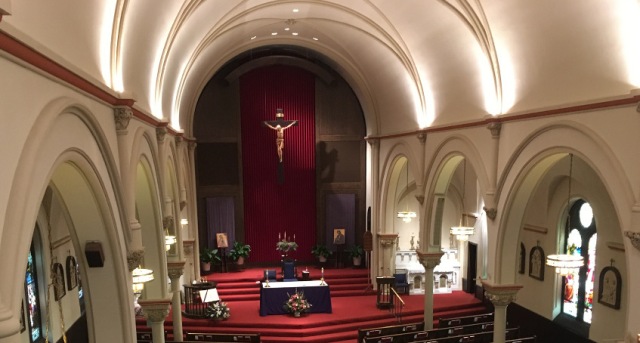Lectionary-based catechesis has its pluses and minuses. I think is important to immerse students in the Bible, especially the Gospels. When we were teaching according to a textbook-based curriculum, I used to do a ten- to fifteen-minute Gospel reflection. Sometimes I would read it aloud, than have one of the better readers read it aloud a second time. Then we’d go over difficult or new words, and a question-and-answer to elicit understanding and get the students thinking about the passage. Other times, I took a more Ignatian approach, encouraging the students to put themselves in the scene and imagine walking with Jesus. A lectionary-based approach encourages this kind of thing, and provides ample opportunities to connect the Gospel to the Old Testament, to the Law and the Prophets who found their fulfillment in Christ.
This is all very well, but there are drawbacks to this approach. First, it is hit-or-miss. The curriculum is at the mercy of the cycle of readings for that year. Important readings are lost, either because of weeks off in the class schedule, summer break, or because the reading occurs on a weekday Mass or on a Holy Day that is not transferred to Sunday. By its nature, lectionary-based catechesis is unsystematic.
Another problem is that the richness of Scripture requires curriculum developers and catechists to be selective. It is impossible to draw every possible lesson from the Sunday readings. This week is a case in point.
The Gospel reading for the 28th Sunday in Year C (and that would be October 9 this year) is the story of the ten lepers. They were healed by Jesus, who then instructed them to present themselves to a priest to be declared free of the leprosy as required by the Law. Only one, a Samaritan rather than a Judean, returned from the priest to give thanks for the great gift our Lord had given him.
Most of the lectionary-based materials for this Sunday take up the theme of inclusion or inclusivity. There are good reasons for this. Lepers in were the outcasts among the outcasts, literally untouchable. Their healing brought them back into the greater community. Moreover, the grateful leper was the Samaritan, and in a sense he would remain an outsider even after he was healed. Moreover, grade four is the age when children start to worry about who’s out and who’s in. It’s when social circles, cliques if you will, begin to form. Now is the time to begin inculcating the Christian premise that all are welcome, to begin teaching against discrimination and exclusion.
But something greater, more important, is missing from all of the materials I’ve reviewed, and that is the question of gratitude. The gratitude we owe to each other, and first and foremost the gratitude we owe to the Almighty. Today most people, even Catholics I should say, no longer say grace before eating. The Thanksgiving holiday, coming in a few short weeks, is more an occasion to pig out and watch football than to, well, give thanks.
The materials not only failed to mention the need for thanksgiving and gratitude, they failed to make the connection to the Eucharist. That word, I trust you know, means thanksgiving.
Speaking of Catholics, we sometimes hear distressing statistics regarding how many Catholics believe, or rather don’t believe, that Jesus Christ is truly present in the Eucharist. One of the more recent surveys shows that only 65% of “practicing Catholics” believe that the Eucharist is “the true presence of Jesus Christ”. Moreover, a large number of Catholics say that going to Mass is not important. Never mind that one of the Precepts of the Church is “to attend Mass on Sundays and Holy Days of Obligation”. If we truly believed Jesus was present in the Eucharist, would we not want to be at Mass every time we could? Would we not go out of our way to be there?
In preparing for this week’s lesson, I made sure that the class won’t miss the fact that we owe gratitude to God and to each other for the blessings that we have, and that the greatest way we show our gratitude to God is in our joyful and active participation in the liturgy.
The Sacred Page has an excellent article on the topic of gratitude and the Eucharist. Please give it a read.

